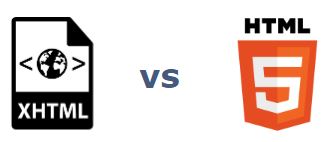XHTML vs HTML5
Extensible HyperText Markup Language (XHTML) and HyperText Markup Language (HTML5) are both markup languages. XHTML is an extension of HTML that was created to solve compatibility issues across browsers. HTML5 is a newer version of HTML.
Let’s go over some of the differences between XHTML and HTML5.
XHTML
-
Has a more extensive doctype compared to HTML5.
-
All elements should have their corresponding closing tag.
-
There are no tags for header, footer, section, article, nav, and divs with classes; instead, ids have to be used.
-
Case-sensitive.
-
Contains no GeoLocation API.
-
Not supported by some browsers (e.g., Internet Explorer 8)
HTML5
-
Has a much simpler doctype than XHTML.
-
Some elements can omit the ending tag.
-
There are tags for header, footer, section, article, and nav. This makes it easier to write and read code.
-
Case-insensitive.
-
Incorporates an API that enables users to share their location.
-
Compatible with all browsers.
While XHTML was designed to overcome the shortcomings of HTML4, HTML5 addresses the problems in HTML4 and XHTML and includes more features (e.g., location API and audio tags). Hence, it has become the most widely used markup language in today’s world.
RELATED TAGS
